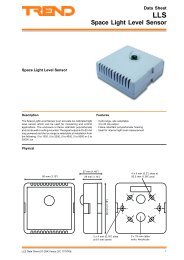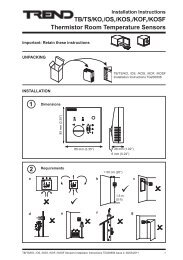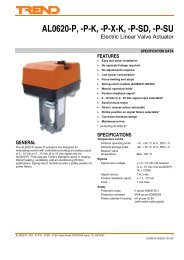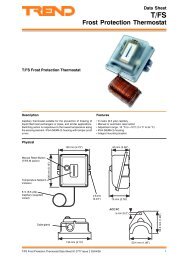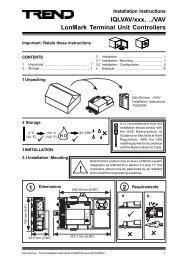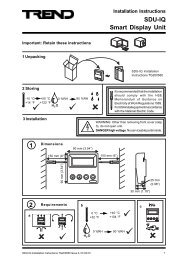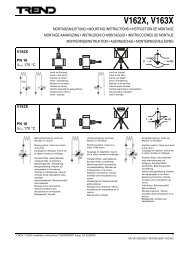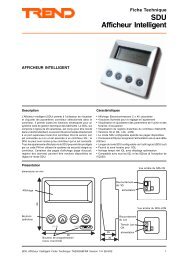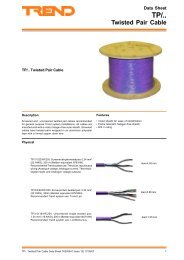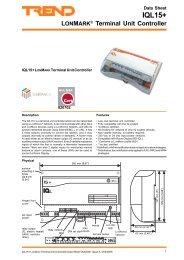Installation/startup instruction (English) - PNet - Trend
Installation/startup instruction (English) - PNet - Trend
Installation/startup instruction (English) - PNet - Trend
- No tags were found...
Create successful ePaper yourself
Turn your PDF publications into a flip-book with our unique Google optimized e-Paper software.
Configuration ExampleA1Configuration Example (continued)Output53 Power Scale Kp54 Energy ke150 Communications ErrorLabelConfigure StrategyThe strategy is configured with a sensor for the first 12 outputs plus one for the scaling of ‘Phase 1 volts’ and anotherfor the error status. Each sensor is linked to an output via a connective.Sensor Output Label Units1 1 KWh2 2 KVAh3 3 Kvarh4 4 Export kWh5 5 Phase 1 Amps6 6 Phase 2 Amps7 7 Phase 3 Amps8 8 Phase 1 Volts9 9 Phase 2 Volts10 10 Phase 3 Volts11 11 Ph1-Ph2 Volts12 12 Ph2-Ph3 Volts13 51 Phase Volts Scale Kvp14 150 Communications ErrorThis is done by clicking Add Sensors in the XNC Interface Module dialogue box and entering 1 as the start sensor,and 14 as the total number of sensors to add the sensors, then dragging the connective to the sensors to onto theoutputs. The sensors are added to the strategy on page 3 as shown below.Some strategy is required to correctly scale the value returned form the meter. For the purposes of this example wewill only scale the ‘Phase 1 Volts value’. This uses the scaling provided by ‘Phase Volts Scale Kvp’ available formsensor 13. The scaling uses the formula shown below:R=Ix10 (K-3)R = Scaled valueI = returned value (sensor 8)K = Scaling factor (sensor 13)IQ3/XNC MODBUS Driver Manual TE201101 Issue 2, 12-Apr-201141



